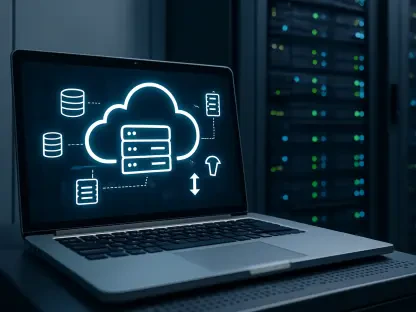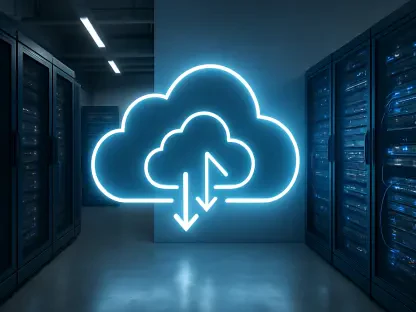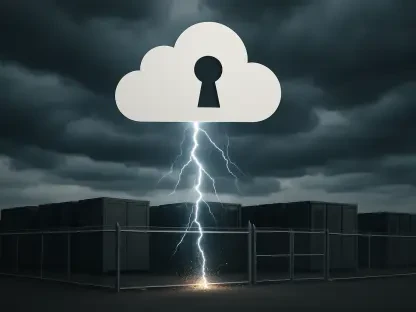Beneath the surface of the world’s oceans lies an invisible network that powers the digital economy, with undersea cables carrying an astonishing 95% of global data traffic and facilitating $10 trillion in daily financial transactions, making them vital to modern life. These submarine lifelines, however, are increasingly under threat from a mix of natural disasters, human error, and intentional sabotage, posing a severe risk to the global cloud infrastructure that underpins everything from streaming platforms to financial systems. A single disruption can ripple across continents, causing billions in economic losses and exposing the fragility of a system many take for granted. As incidents mount and geopolitical tensions simmer, the stability of this critical backbone hangs in the balance, demanding urgent attention from tech giants and policymakers alike. The implications are vast, touching not just operational continuity but also investor confidence and market dynamics in the tech sector.
Assessing the Scope of Cable Vulnerabilities
Escalating Disruptions and Regional Impact
The frequency of undersea cable disruptions has reached alarming levels, with 44 publicly reported incidents documented in the span of a year from 2024 to 2025, highlighting a growing threat to global connectivity. High-risk areas such as the Baltic Sea, Taiwan, and the Red Sea have borne the brunt of these outages, often leaving entire regions crippled. A notable case in the Red Sea saw four major cables severed, resulting in up to 90% connectivity loss in countries like Ethiopia and Somalia, with economic damages estimated at $3.5 billion. Such events reveal a stark lack of redundancy in certain parts of the world, where reliance on a handful of cables amplifies the impact of any single failure. For many nations, especially in West Africa and the Pacific Islands, recovery from such disruptions can stretch over weeks or months, exacerbating digital divides.
Beyond the immediate loss of connectivity, these incidents expose systemic weaknesses in the global data network that tech companies must navigate. The uneven distribution of cable infrastructure means that while some regions boast multiple backup routes, others remain perilously exposed to even minor damage. Environmental hazards like underwater earthquakes, coupled with accidental cuts from fishing vessels or ship anchors, contribute to the rising tally of disruptions. This persistent vulnerability underscores the urgent need for strategic investments in resilient infrastructure to safeguard against both natural and human-induced threats. As the digital economy grows, the stakes of maintaining uninterrupted data flow become ever higher, pushing industry leaders to rethink their approach to network design.
Economic Toll and Operational Strain
The economic fallout from undersea cable disruptions is staggering, with billions of dollars lost in regions hit by major outages, disrupting trade, communication, and critical services. In areas like the Red Sea, where connectivity is already sparse, a single incident can grind entire economies to a halt, affecting everything from local businesses to international transactions. The ripple effects extend far beyond the immediate area of impact, as global supply chains and financial markets feel the strain of delayed data transfers. For countries heavily reliant on cloud-based services, these disruptions translate into tangible losses in productivity and revenue, often with long-term consequences for economic stability and growth.
Operationally, cloud service providers face immense challenges as even minor latency spikes from cable outages can wreak havoc on latency-sensitive sectors like fintech and artificial intelligence. Tech giants such as Amazon, Microsoft, and Google, which dominate the cloud market, encounter increased costs as they scramble to reroute traffic or deploy temporary fixes. These disruptions also risk eroding customer trust, as businesses and end-users grow frustrated with inconsistent service. The pressure to maintain seamless operations in the face of such vulnerabilities forces companies to allocate significant resources to contingency planning, often diverting funds from innovation to damage control. This balancing act between immediate response and long-term strategy is becoming a defining challenge for the industry.
Navigating Geopolitical and Regulatory Hurdles
Tensions and Threats of Sabotage
Geopolitical tensions are casting a long shadow over the security of undersea cables, with suspicious activities near strategic regions raising concerns about deliberate interference. Incidents near Taiwan, for instance, have spotlighted the potential involvement of state-linked entities in cable disruptions, fueling fears of sabotage as a tool of geopolitical leverage. Such actions are not merely technical threats but acts that can destabilize entire regions, heightening anxieties among nations dependent on these data lifelines. As rivalries intensify in critical maritime zones, the risk of intentional damage to submarine infrastructure becomes a pressing issue for global security and economic stability.
The implications of these geopolitical risks extend to the operational strategies of cloud providers, who must now factor in the possibility of targeted attacks when planning their networks. Reports of vessels linked to certain nations lingering near key cable routes have prompted calls for enhanced surveillance and international cooperation to deter potential threats. For hyperscalers operating across borders, this adds a layer of complexity to an already challenging landscape, as they navigate not just technical but also diplomatic obstacles. The politicization of cable security signals a shift in how these assets are perceived, transforming them from mere infrastructure into pawns in broader power struggles, with far-reaching consequences for the tech sector.
Policy Shifts and National Initiatives
Regulatory responses in major markets like the U.S. and Europe are adding further complications for cloud providers, as governments push for stricter oversight of cable projects involving foreign entities. These measures, driven by concerns over national security, often create hurdles for hyperscalers seeking to expand or maintain their global networks. Compliance with evolving rules can delay critical infrastructure projects, increase costs, and limit partnerships, particularly in regions where geopolitical sensitivities run high. This regulatory landscape forces tech companies to adapt their strategies, balancing the need for global reach with the demands of local governance.
In contrast, some nations are taking proactive steps to bolster resilience, with Japan emerging as a leader through substantial investments in expanding cable infrastructure and ensuring redundancy. By fostering public-private partnerships, the country has enhanced monitoring capabilities and diversified data routes, offering a potential model for others to emulate. These efforts highlight the importance of national commitment to securing digital lifelines, especially in an era of mounting threats. However, the lack of cohesive global standards means that such initiatives remain fragmented, leaving many regions vulnerable. The disparity in approaches underscores the need for coordinated international action to address the systemic nature of cable vulnerabilities.
Market Reactions and Financial Implications
Investor Focus on Risk Management
Investor sentiment is shifting as stakeholders increasingly scrutinize how tech companies manage the systemic risks tied to undersea cable disruptions. With the potential for outages to impact service delivery and revenue streams, there is growing demand for transparency on resilience strategies and contingency plans. Firms that fail to demonstrate preparedness face heightened risks of reputational damage, which can quickly translate into financial setbacks as confidence wanes. This scrutiny is reshaping how the market evaluates tech equities, with risk management becoming a critical factor in investment decisions.
The financial implications of cable disruptions are particularly pronounced for companies heavily invested in cloud services, where uptime is non-negotiable for customer retention. Latency issues or prolonged outages can trigger contractual penalties and loss of market share, directly affecting bottom lines. Investors are thus prioritizing companies that show foresight in addressing these vulnerabilities, whether through diversified infrastructure or robust disaster recovery protocols. This trend signals a broader shift in the tech sector, where resilience is no longer just an operational concern but a key determinant of long-term value and stability in an unpredictable environment.
Strategic Edge for Proactive Firms
Amid these challenges, companies that invest in diversified networks and proactive measures are gaining a competitive edge, positioning themselves favorably in the eyes of investors and customers alike. Hyperscalers like Microsoft, with projects such as the Marea cable, and Google, with systems like Dunant and Topaz, are better equipped to weather disruptions compared to smaller providers reliant on single-route cables in unstable regions. Their ability to reroute traffic and maintain service continuity during outages enhances their market standing, setting a benchmark for others in the industry.
This strategic advantage is not merely about infrastructure but also about perception, as firms demonstrating adaptability and innovation in the face of cable threats inspire greater confidence. Market dynamics are tilting toward these industry leaders, who can absorb the high costs of building redundancy and exploring alternative technologies. Smaller players, however, often lack the resources to match such efforts, widening the gap between major hyperscalers and emerging providers. As disruptions continue to test the resilience of global networks, the ability to stay ahead of risks through forward-thinking investments will likely define the competitive landscape of the cloud sector.
Exploring Solutions and Their Constraints
Advancing Redundancy and Technological Innovation
Cloud providers are actively pursuing strategies to mitigate the risks of undersea cable disruptions, with geographical redundancy emerging as a cornerstone of their efforts to ensure uninterrupted service. By establishing alternative data routes and investing in diverse cable systems, companies aim to minimize the impact of any single outage, particularly in high-risk areas. Additionally, the adoption of edge computing is gaining traction as a way to reduce reliance on long-haul data transmission, bringing processing closer to end-users and enhancing resilience. These innovations represent a significant step forward in safeguarding the digital economy against the vulnerabilities of submarine infrastructure.
Public-private partnerships are also playing a pivotal role in bolstering security, with initiatives like those in Japan setting a precedent for collaborative monitoring and rapid response to threats. By aligning government resources with industry expertise, such efforts enhance the ability to detect and address disruptions before they escalate. However, scaling these solutions globally remains a challenge, as disparities in funding and technical capacity limit their reach. While these strategies offer promising avenues for reducing risk, their implementation requires substantial investment and coordination, often stretching the capabilities of smaller providers or less-developed regions.
Barriers to Alternative Technologies
Despite the push for innovation, alternative solutions to undersea cables, such as satellite and microwave technologies, come with significant limitations that hinder their widespread adoption. High costs and restricted bandwidth make these options less viable for latency-sensitive applications, which are central to the operations of many cloud providers. For sectors like fintech, where split-second data transfers are critical, satellites often fall short of delivering the required performance, leaving companies with few practical substitutes for traditional cable networks. This gap in capability underscores the difficulty of replacing or supplementing submarine infrastructure on a large scale.
Smaller providers and regions with limited resources face even greater obstacles in adopting these alternatives, as the financial burden of transitioning to new systems can be prohibitive. High-risk areas, already vulnerable due to sparse cable coverage, struggle to access the capital and expertise needed to implement effective solutions, perpetuating their exposure to disruptions. The disparity between industry leaders and smaller players highlights a broader challenge: ensuring equitable access to resilient infrastructure. Until more cost-effective and scalable options emerge, the reliance on undersea cables will persist, along with the associated risks that threaten global connectivity.
Reflecting on Paths to Resilience
Looking back, the mounting frequency of undersea cable disruptions revealed a critical vulnerability in the global cloud infrastructure, with significant economic and operational impacts felt across industries. Incidents that severed connectivity in regions like the Red Sea left lasting scars on local economies, while tech giants grappled with the fallout of latency issues and customer dissatisfaction. Geopolitical tensions and regulatory shifts further complicated the landscape, turning cable security into a matter of national concern. As investors grew wary, the pressure on companies to prioritize resilience became undeniable, shaping market perceptions and financial outcomes.
Moving forward, the path to stability hinges on a blend of innovation and collaboration, with tech firms urged to deepen investments in diversified networks and cutting-edge solutions like edge computing. Nations must follow the lead of proactive models, fostering partnerships to enhance monitoring and response capabilities. International coordination remains essential to bridge gaps in infrastructure and resources, ensuring that even the most vulnerable regions gain access to reliable connectivity. By addressing these systemic threats with unified action, the industry can fortify the backbone of the digital economy against future uncertainties.









